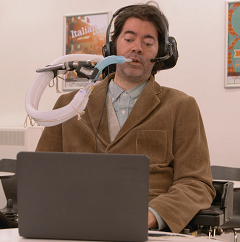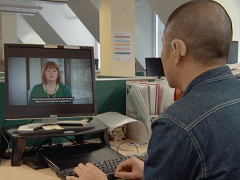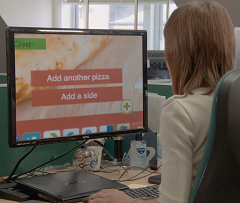About W3C WAI
W3C WAI
The World Wide Web Consortium (W3C) is an international public-interest non-profit organization where Member organizations, a full-time staff, and the public work together to develop web standards. Web Accessibility Initiative (WAI) is a key aspect of W3C’s work for the benefit of humanity.
This information extends the W3C Mission (vision, identity, design principles, strategic goals) to address accessibility specifics.








Mission
W3C’s Web Accessibility Initiative (WAI) develops strategies, standards, and supporting resources to make the web accessible to people with disabilities.
See Introduction to Web Accessibility and WAI Resources.
Vision
The WAI vision is that the web and related technologies are accessible so that all people with disabilities around the globe can participate equally in the digital world. That includes:
- Accessibility standards/guidelines are harmonized globally.
- All technical standards and specifications support accessibility.
- Tools that create and deliver digital content support accessibility.
- Everyone who creates or manages digital products has relevant accessibility knowledge.
- New technologies, digital products, and content addresses accessibility from inception (“born accessible”).
Broad vision is in Vision for W3C.
High-Level Objectives
To contribute to realizing the vision, W3C addresses the following areas:
- Specifications, standards, and technologies support accessibility:
- Ensure that W3C specifications support accessibility.
- Provide guidance on accessibility in other specifications and technologies.
- International accessibility standards:
- Facilitate international multi-stakeholder development and communication so the standards can be adopted and implemented internationally.
- Develop technical specifications to support accessibility, such as WAI-ARIA and accessibility API mappings.
- Develop accessibility standards/guidelines for relevant tools and content.
- Provide guidance beyond what can be included in these standards, such as WCAG Supplemental Guidance.
- Support understanding, adopting, and implementing accessibility:
- Facilitate and promote translations of W3C accessibility standards and supporting resources.
- Provide documentation on understanding and implementing accessibility standards.
- Provide awareness and education resources, such as many listed in WAI Resources.
- Accessibility research:
- Encourage effective international research to provide a solid basis for accessibility standards.
- Conduct horizon scanning.
Current Work and News
Current work is introduced in What We’re Working On - Accessibility Activities and Publications.
New WAI publications, draft documents for review, and other WAI announcements are listed on the News page.
You can get news announcements via e-mail, Atom/RSS feed, and social media from Subscribe to WAI News.
WAI Groups
WAI includes the following working groups and interest group:
- Accessibility Guidelines Working Group (AG WG) (formerly the Web Content Accessibility Guidelines Working Group)
- Accessible Platform Architectures (APA) Working Group
- Accessible Rich Internet Applications (ARIA) Working Group
- WAI Interest Group (WAI IG) hosts an e-mail discussion list that is open to anyone
W3C Community Ggoups
W3C Community Groups cover a variety of topics. Anyone can join Community Groups, after getting a free W3C account and signing the W3C Community Contributor License Agreement. Of the long list of Community Groups, here are some that are actively seeking contributors:
Learn more about Participating in WAI.
WAI Staff
- Shawn Lawton Henry — Director, Web Accessibility Initiative (WAI) — leads the WAI program, education, communications, community and global outreach, development, and stakeholder engagement in W3C accessibility activities.
- Kevin White — Senior Principal Accessibility Specialist — leads W3C accessibility technical work, oversees accessibility working groups, and supports the Accessibility Guidelines Working Group that develops Web Content Accessibility Guidelines (WCAG).
- Roy Ruoxi Ran (冉若曦) — Principal Accessibility Specialist — supports accessibility working groups, accessibility in China, and W3C work on AI.
- Daniel Montalvo — Principal Accessibility Specialist — supports accessibility working groups and standards harmonization.
- Ken Franqueiro — Senior Software Engineer — supports the technical architecture for WCAG 2, WCAG 3, and more.
- Tamsin Ewing — Senior Accessibility Content Specialist — supports accessibility communications, educational resources, and working group deliverables.
- Rémi Bétin — Senior Project Manager, Web Accessibility Initiative (WAI) — supports WAI translations, WAI website processes, WAI training courses, and more.
To reach all WAI staff, you can e-mail wai@w3.org.
Back to Top